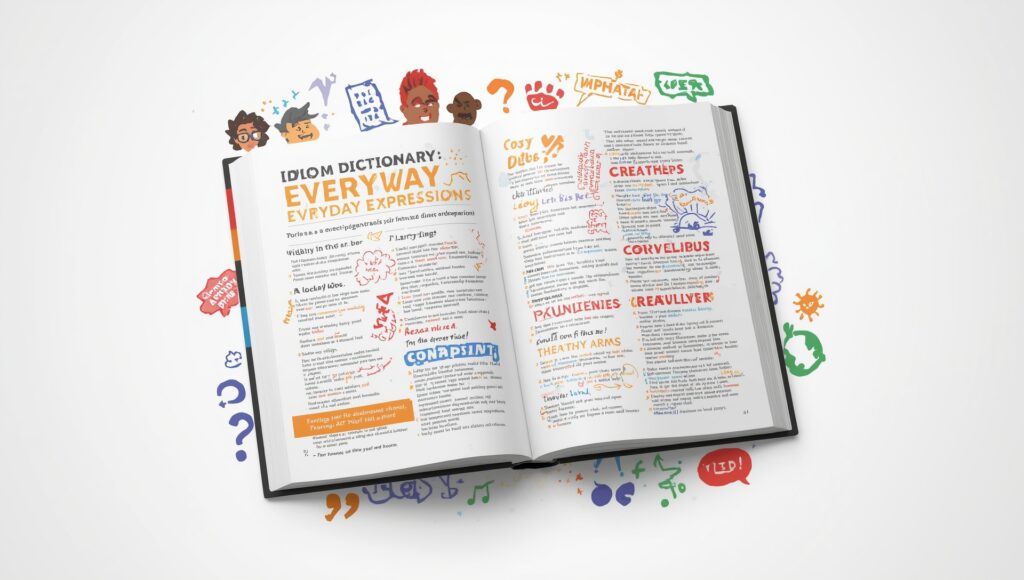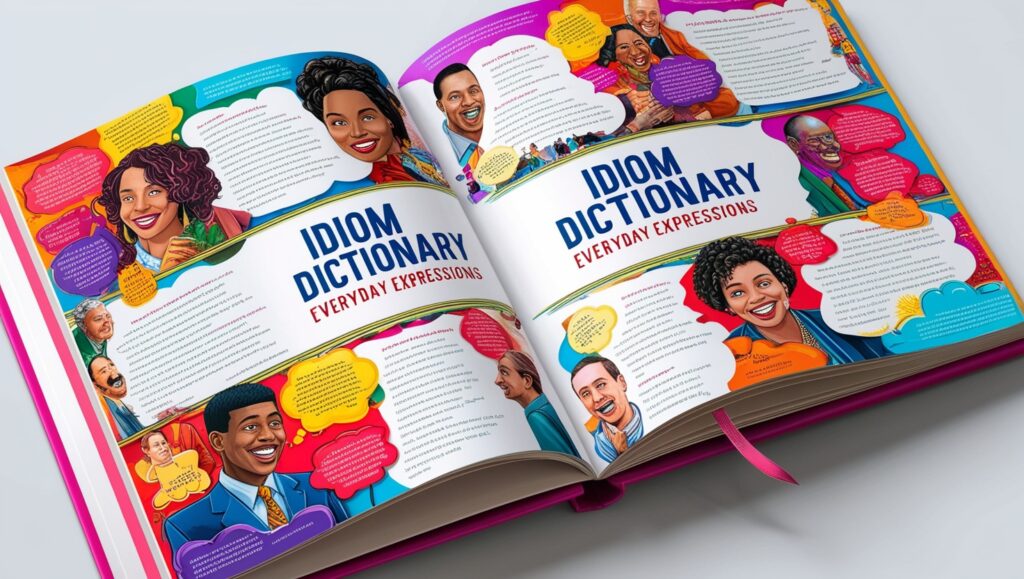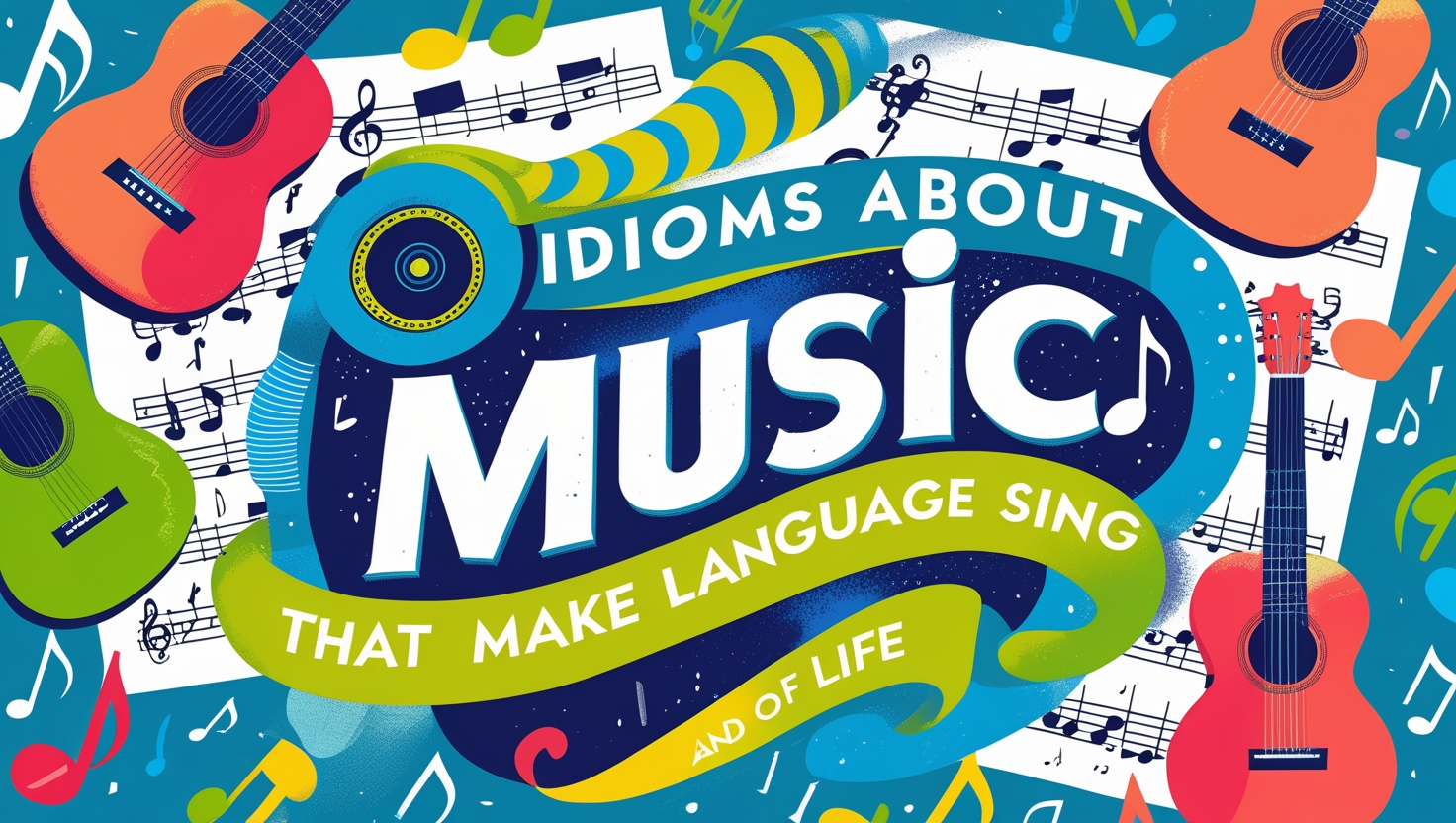Idiom Dictionary: Everyday Expressions
Language is one of the most effective mechanisms available to people. Every language incorporates a wealthy collection of expressions, cultural references, and symbolic meanings that move some distance beyond their literal definitions. Among those, idioms stand out as bright terms whose meanings can’t be directly understood from the character words on my own. They add character, intensity, and nuance to communique, making speech and writing more enticing.
For all of us aiming to benefit from a more potent command of English or raise their conversation competencies, an idiom dictionary is extra than only a handy reference—it’s far from a vital mastering resource.
This manual examines the cause, structure, and cost of idiom dictionaries, exploring how idioms influence normal communication, improve literature, and shape media content. It also well-known shows the cultural significance of idioms in expressing shared reports. Whether you are a student, author, language learner, or professional communicator, know-how how to use an idiom dictionary can be a sport-changer in studying the English language.
Understanding Idioms: Beyond Literal Meaning
Idioms are precise expressions whose meanings can’t be understood with the aid of really deciphering the character words. For example, “spill the beans” is a riddle and has nothing to do with food. Such expressions are deeply woven into normal language and are often used unconsciously by local speakers.
Idioms’ metaphorical quality is what makes them so beautiful. They upload color, persona, and cultural richness to conversation. Idioms can bring complex thoughts concisely, screen humor or irony, and mirror the values of a tradition. However, for language rookies—or even younger native audio systems—they may be hard to interpret. This is where an idiom dictionary becomes an important aid.
What Is an Idiom Dictionary?
An idiom dictionary is a specialized reference—available in print or virtual form—that explains idiomatic expressions in element. Unlike a well-known dictionary, which specializes in literal phrase meanings, an idiom dictionary gives:
- Meanings of idioms that cannot be interpreted actually.
- Origins and historic context wherein available.
- Usage examples displaying how idioms are healthy into actual-lifestyle verbal exchange.
- Grammar notes to manual right usage.
These dictionaries may be organized alphabetically, thematically, or by way of keyword. Many contemporary variations also consist of pronunciation publications, associated idioms, and insights into cultural importance.
Why Idiom Dictionaries Are Important for Language Learning
For freshmen of English, idioms can be one of the most confusing but critical components of gaining knowledge of the language. They seem anywhere—in books, films, podcasts, social media, and regular conversations. Without know-how, beginners are lacking nuance or a false impression of what it is supposed to mean.
Key blessings of the use of an idiom dictionary include:
1. Improved Comprehension – Quickly grasp the meaning of unusual expressions.
2. More Natural Communication – Use idioms appropriately to sound fluent and confident.
3. Cultural Insight – Understand the cultural and historical roots in the back of common sayings.
4. Academic and Professional Advantage – Strengthen writing, talking, and comprehension talents for exams, presentations, and workplace interactions.
Structure and Features of a Quality Idiom Dictionary
An expert idiom dictionary goes beyond primary definitions. Typical features encompass:
- Clear, concise motives in undeniable language.
- Example sentences to illustrate correct usage.
- Grammar and usage notes for different contexts.
- Cross-references to associated idioms for broader information.
- Thematic categories include business, sports activities, relationships, and fitness.
- Cultural historical past explaining origins and importance.
- Visual aids in digital formats to support know-how.
How Idiom Dictionaries Differ from Other Resources
- Traditional Dictionaries give an explanation for literal meanings of words, at the same time as idiom dictionaries consciousness on figurative language.
- Slang Dictionaries cover casual and regular area-specific language, whereas idioms are generally recognized across areas and utilized in both formal and informal settings.
- Phrasebooks offer sensible tour expressions, but idiom dictionaries explore language for deeper cultural and linguistic information.
See also “Exploring Popular Teeth Idioms“
Common Idiom Categories
Idioms are often organized with the aid of themes to make them simpler to examine. Popular classes consist of:
- Feelings & Emotions – “feeling blue,” “on cloud nine”
- Business & Finance – “in the red,” “ballpark figure”
- Health & Body –”not feeling well,” “a sore neck”
- Relationships – “hit it off,” “see eye to eye”
- Animals & Nature – “elephant in the room,” “let the cat out of the bag”
- Sports & Competition – “throw in the towel,” “level playing field”
- Time & Age – “in the nick of time,” “behind the times”
- Innovation and Technology – “push the envelope,” “cutting edge”
The Rise of Digital Idiom Dictionaries
Modern technology has transformed idiom dictionaries into dynamic, interactive tools. Online platforms and cell apps now provide:
- Search capabilities for instant outcomes.
- Audio pronunciation for native-like delivery.
- Daily idiom notifications to encourage slow mastering.
- User contributions to increase idiom collections.
- Multi-language translations for bilingual inexperienced persons.
These virtual assets make idioms more handy than ever—in particular for students, experts, and vacationers.
Idioms in Professional Communication
In enterprise and expert settings, idioms regularly appear in conferences, negotiations, displays, and emails. Mastering them can help you:
- Build rapport with colleagues and clients.
- Demonstrate cultural fluency.
- Communicate with greater self belief and persuasion.
For example, a manager might say “Let’s get the ball rolling” to start a venture, or a consumer may use “We’re at the same page” to confirm agreement. Understanding and the usage of these expressions accurately strengthens administrative center communication.

Building Your Own Idiom Collection
While posted dictionaries are extremely good references, retaining a non-public idiom journal can accelerate studying.
Tips for developing your own idiom collection:
- Maintain a devoted pocket book or virtual record.
- Record in which and the way you encountered every idiom.
- Create your own example sentences.
- Group idioms by means of theme.
- Review them often to boost memory.
Over time, this dependency boosts fluency, builds self assurance, and helps you use idioms naturally in both speakme and writing.
The History and Evolution of Idioms
Idioms regularly have fascinating origins, lots of which date lower back centuries. Some come from literature, like Shakespeare’s “damage the ice,” while others hint returned to nautical terms, army slang, or ancient myths. Understanding those origins provides intensity to comprehension and makes idioms easier to bear in mind.
For example:
- “Bite the bullet” – Originates from battlefield medication when wounded soldiers actually bit on a bullet to endure ache during surgical treatment.
- “Close however no cigar” – Comes from early 20th-century carnival video games inside the U.S., where cigars were given as prizes.
By mastering those testimonies, language novices now not only apprehend the meaning however additionally benefit from insight into the tradition and records of English-talking societies.
How Idioms Vary Across English-Speaking Regions
While many idioms are broadly understood, local variations can be full-size. British English, American English, Australian English, and different dialects regularly have their very own specific idioms.
Examples:
- UK: “Insist on causing a disturbance by throwing a spanner inside the works.”
- US: “Throw a wrench inside the works” (same that means, one-of-a-kind wording).
- Australia: “Flat out like a lizard consuming” (very busy).
An idiom dictionary that consists of local variations allows newcomers to speak more effectively with specific English-speaking audiences.
Why Idioms Are Difficult for Learners
Even advanced English newcomers can conflict with idioms because:
- Literal translation fails – Directly translating an idiom into every other language regularly makes no feel.
- Cultural references are unusual – Without knowing the history or tradition, meaning can be misplaced.
- Figurative questioning is required – Idioms depend upon metaphorical connections that could differ from one subculture to another.
This is why idiom dictionaries often encompass cultural context and example sentences to bridge the gap.
The Cognitive Benefits of Learning Idioms
Beyond improving verbal exchange abilities, gaining knowledge of idioms has been shown to:
- Enhance memory – The vivid imagery of idioms makes them less difficult to remember.
- Improve innovative questioning – Interpreting figurative language encourages flexible wondering.
- Boost language self assurance – Using idioms successfully indicators fluency and cultural competence.
For example, a language learner who can casually use “hit the floor going for walks” in a job interview will sound more herbal and assured.
Choosing the Right Idiom Dictionary
Not all idiom dictionaries are created equal. When deciding on one, look for:
- Credible sources – Well-hooked up publishers or linguistic experts.
- Clear motives – Avoid overly technical language.
- Example-rich content material – Real-lifestyles usage examples are crucial.
- Cultural notes – Helps you apprehend deeper meanings.
- Digital capabilities – Search capabilities, audio pronunciation, and quizzes can make studying interactive.
Practical Tips for Learning Idioms
1. Learn them in context – Study idioms within actual conversations, not in isolation.
2. Practice the usage of them – Incorporate idioms into your writing and speech.
3. Start by mastering the idioms – you’ll hear the most frequently.
4. Use spaced repetition – Review often for lengthy-time period retention.
5. Be mindful of ritual – Some idioms can be too casual for positive settings.
Common Mistakes Learners Make with Idioms
- Idiom overuse – Too many idioms can make speaking sound forced.
- Mixing idioms – Combining two expressions can confuse listeners (“We’ll go to that bridge while we get to the ballpark”).
- Ignoring the target market – Using location-unique idioms with human beings surprising them may also cause misunderstanding.

Future of Idioms within the Digital Age
With the upward push of on-line conversation, new idioms and slang expressions are emerging rapidly. Digital idiom dictionaries are adapting to encompass contemporary expressions from social media, gaming, and net culture, which includes:
- “Sliding into DMs” (using social media to convey a private message).
- “Breaking the net” (inflicting big on line attention).
Language is dwelling, and idioms will preserve to conform alongside technology and subculture.
MCQs
1. What is an idiom dictionary’s primary purpose?
A) To define literal meanings of words
B) To explain figurative expressions and their usage
C) To provide translations for all world languages
D) To offer only slang and regional dialect meanings
Answer: B
2. Which of the following is NOT a typical feature of a quality idiom dictionary?
A) Example sentences
B) Cultural background
C) Grammar notes
D) Translation of idioms into mathematical formulas
Answer: D
3. The idiom “spill the beans” means:
A) Make a mess while eating
B) Reveal a secret
C) Cook dinner for friends
D) Start a new project
Answer: B
4. Which of these idiom categories includes “in the nick of time”?
A) Business & Finance
B) Time & Age
C) Animals & Nature
D) Health & Body
Answer: B
5. What is one advantage of using idioms in professional communication?
A) They make you sound overly casual
B) They can confuse clients
C) They help build rapport and cultural fluency
D) They eliminate the need for clear explanations
Answer: C
6. The origin of “bite the bullet” comes from:
A) Military battlefields where soldiers endured pain by biting bullets
B) Carnival games where bullets were given as prizes
C) A hunting tradition
D) An old courtroom practice
Answer: A
7. What phrase is the British equivalent of the American phrase “throw a wrench in the works”?
A) Throw a spanner in the works
B) Drop the ball
C) Miss the boat
D) Cut corners
Answer: A
8. Which is a common mistake learners make with idioms?
A) Learning them in context
B) Mixing idioms together
C) Understanding their cultural background
D) Using spaced repetition
Answer: B
9. Digital idiom dictionaries often include:
A) Audio pronunciation
B) Daily idiom notifications
C) Search functions
D) All of the above
Answer: D
10. What does “flat out like a lizard drinking” mean in Australian English?
A) Being very tired
B) Being very busy
C) Being very relaxed
D) Being very thirsty
Answer: B
11. Why are idioms often difficult for non-native speakers to understand?
A) They contain too many grammar rules
B) Their meanings are not literal
C) They are only used in literature
D) They require translation into another language
Answer: B
12. Which feature distinguishes idiom dictionaries from regular dictionaries?
A) Alphabetical arrangement
B) Inclusion of figurative meanings and cultural notes
C) Definitions of single words only
D) Focus on scientific terminology
Answer: B
13. Which idiom relates to taking a big risk?
A) Break the ice
B) Jump on the bandwagon
C) Go out on a limb
D) Hit the sack
Answer: C
14. How do idioms enhance communication?
A) By adding depth, creativity, and cultural richness
B) By making speech longer
C) By replacing proper grammar
D) By avoiding emotional expression
Answer: A
15. The expression “once in a blue moon” describes:
A) Something that happens very often
B) Something rare or unusual
C) Something that is predictable
D) Something related to astronomy only
Answer: B
Summary
This article explains what an idiom dictionary is, why it matters, and how it helps newcomers master figurative expressions in English.
It defines idioms as terms whose meanings can’t be understood actually, which include “spill the beans”, and highlights their function in including intensity, coloration, and cultural richness to communique. An idiom dictionary—whether or not in print or digital shape—presents meanings, origins, usage examples, grammar notes, and cultural context to make idioms simpler to understand and use.
The piece discusses blessings for learners, such as stepped forward comprehension, natural communique, and cultural perception, and compares idiom dictionaries with everyday dictionaries, slang references, and phrasebooks. It outlines common idiom classes (e.G., emotions, enterprise, health, relationships) and notes how present day virtual tools provide search features, audio pronunciations, every day idiom feeds, and translations.
It also covers idioms in expert settings, the price of keeping a personal idiom series, the records and regional versions of idioms, and why they’re regularly hard for freshmen. The article emphasizes cognitive advantages like better memory and innovative thinking, offers recommendations for deciding on a nice idiom dictionary, and gives gaining knowledge of techniques even as caution towards not unusual errors like overusing or blending idioms. Finally, it notes how idioms are evolving in the digital age with new expressions from on line way of life.
Read more about Idioms At Idiomsinsider




Post Comment